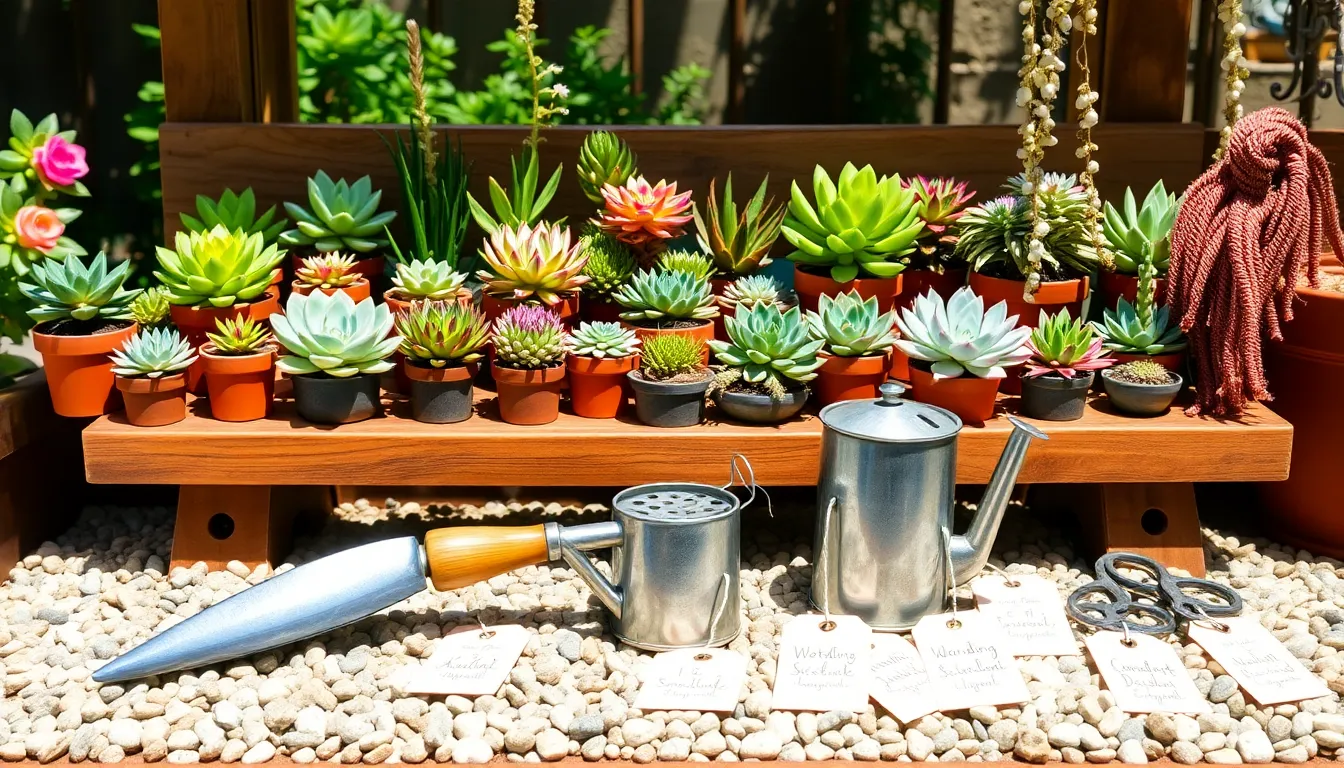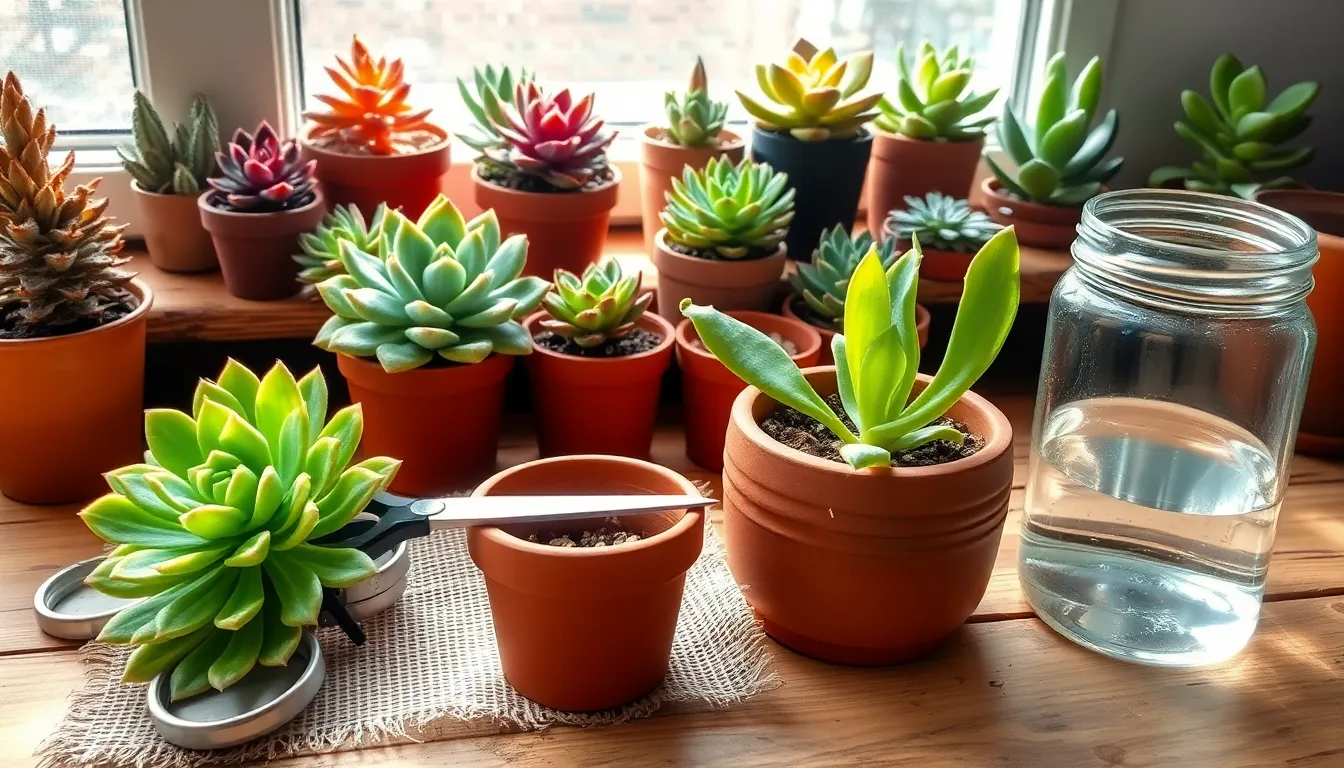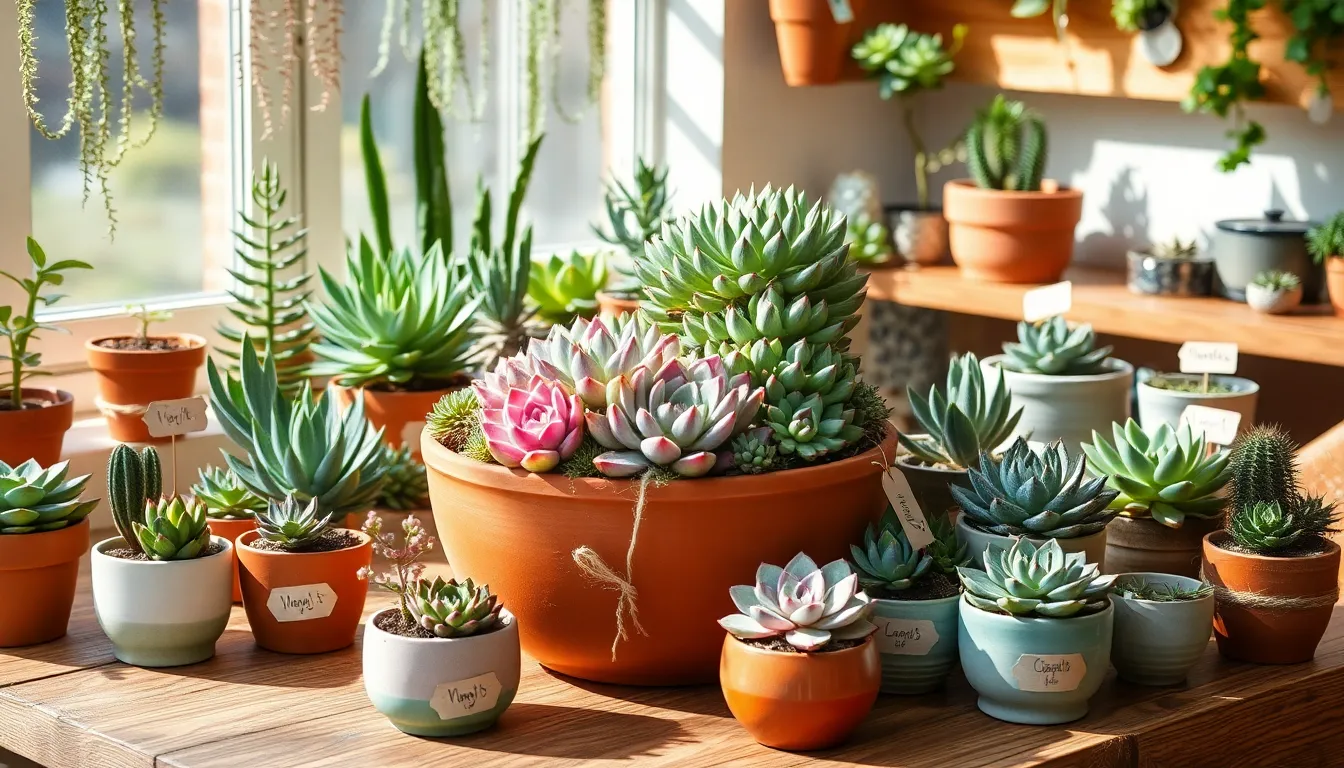In the delightful world of gardening, succulents stand out as both a beginner’s dream and an enthusiast’s canvass. These resilient plants, with their striking forms and vibrant colors, are not only forgiving but also rewarding when care is taken to meet their unique needs. Whether you’re just starting your succulent journey or have a well-established collection, understanding the tools required can make all the difference in cultivating a thriving succulent garden.
Caring for succulents might seem straightforward, yet the right tools can elevate your gardening experience from good to exceptional. From precision watering to ensuring proper soil aeration, each tool plays a critical role in nurturing these hardy plants. In this article, we’ll delve into the nine must-have tools that every succulent gardener should consider adding to their toolkit. You’ll discover how each tool can enhance your care routine, making your succulent garden not only survive but truly flourish.
As you explore these essential tools, you’ll find that even small changes can lead to significant improvements in plant health and aesthetics. By investing in the right equipment, you’ll be better equipped to prevent common succulent issues, such as overwatering and root rot. Whether you’re looking to refine your skills or simply ensure that your succulents thrive, this guide will provide you with practical insights to achieve lush, healthy plants that will be the envy of any gardener. So let’s dig in, and unearth the secrets to successful succulent care with the right tools at your side.
Choosing the Perfect Pot
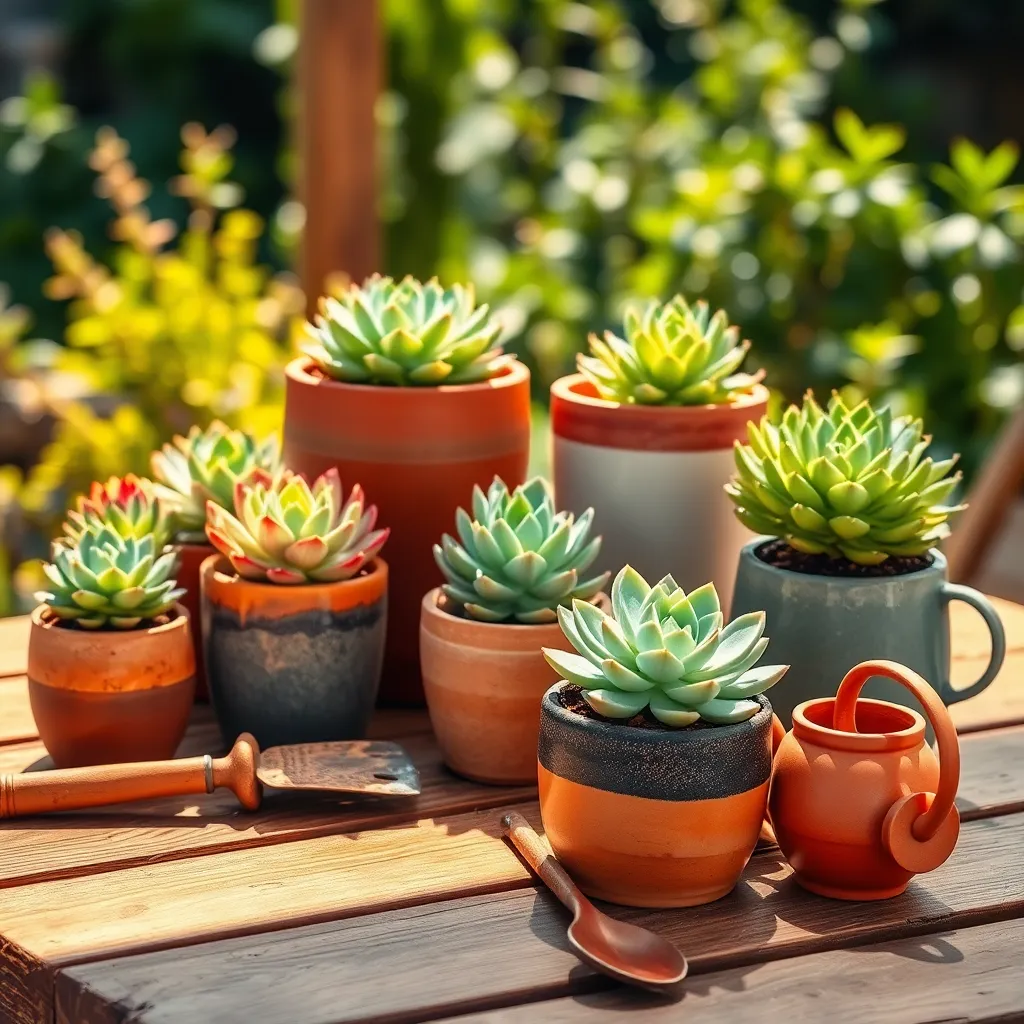
When choosing the perfect pot for your succulents, consider the material and drainage capabilities. Pots made of terracotta or ceramic are ideal because they allow moisture to evaporate, preventing root rot.
It’s crucial to ensure your pot has adequate drainage holes at the bottom. Without these, water can accumulate, leading to potential overwatering and root damage.
For those looking to add a decorative element, opt for pots with interesting shapes or patterns that complement your home or garden aesthetic. Just remember that aesthetic appeal should never compromise the pot’s functionality in terms of drainage and size.
Advanced gardeners might consider using a double potting method, where the succulent is housed in a breathable inner pot that fits inside a decorative outer pot. This allows for aesthetic flexibility while maintaining optimal growing conditions.
Ideal Potting Mix Ingredients

To create the perfect potting mix for succulents, start by using a base of well-draining materials. A combination of cactus soil, which is specifically formulated for succulents, and gritty sand or perlite can provide the drainage these plants need to prevent root rot.
Incorporating inorganic materials like pumice or volcanic rock into your mix is also beneficial. These ingredients not only improve drainage but also provide essential aeration, ensuring that your succulents’ roots have access to oxygen.
For gardeners looking to take their succulent care to the next level, consider adding a small amount of activated charcoal. This helps to absorb impurities and keeps the soil fresh, which is especially useful in indoor environments where air circulation is limited.
It’s crucial to avoid using garden soil in your potting mix, as it retains too much moisture and can compact over time. Instead, focus on creating a light, airy mix that allows for quick drying, which is ideal for the arid conditions succulents thrive in.
Essential Watering Can Features
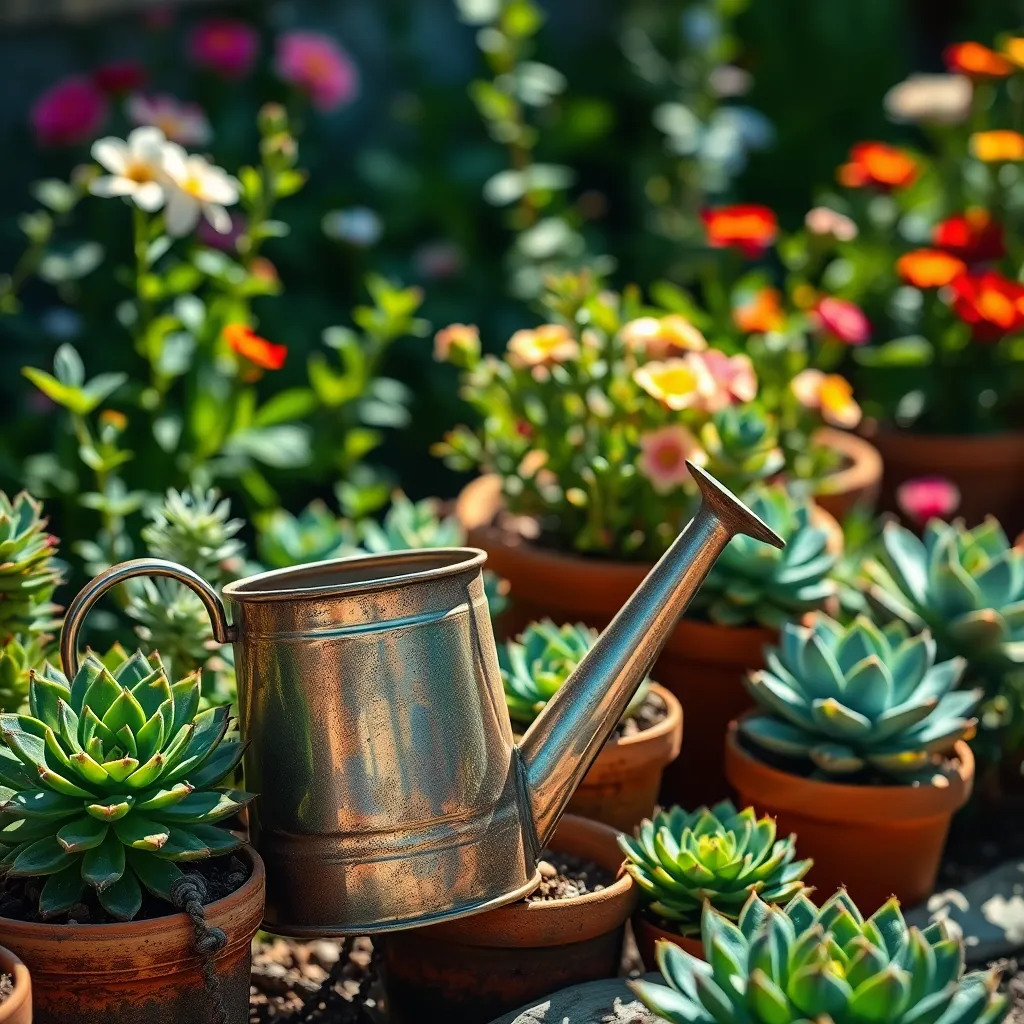
Watering cans are more than just a vessel for delivering water; they are an essential tool for maintaining the health of your succulents. When choosing a watering can, look for one with a narrow spout to control the flow of water precisely, which is crucial for preventing overwatering.
Opt for a watering can with a capacity suitable for your needs; a 1-liter can is often ideal for small succulent collections. Ensure it’s made of a lightweight, durable material like galvanized steel or high-quality plastic, making it easy to handle and long-lasting.
Consider a design with a detachable rose, the perforated spout attachment, which can be used when you want a softer shower effect for newly potted succulents. Having this option allows for versatile watering—use the narrow spout for established plants and the rose for delicate ones.
Advanced gardeners might appreciate a watering can with a built-in measurement scale. This feature makes it easy to monitor the exact amount of water you’re giving each plant, helping prevent overwatering, a common issue with succulents. Investing in a can with these features can significantly enhance your succulent care routine by ensuring each plant receives the appropriate hydration level.
Precision with Soil Moisture Meters

Using a soil moisture meter can significantly enhance your succulent care regimen. These handy tools help you determine the precise moisture level of your soil, ensuring you don’t overwater or underwater your plants.
Avoiding overwatering is crucial, as succulents are prone to root rot when exposed to excessive moisture. By inserting the meter’s probe into the soil, you can gauge whether it’s time for another watering session, keeping your succulents healthy and thriving.
For beginners, a basic soil moisture meter that indicates dry, moist, or wet conditions is sufficient. More advanced gardeners might prefer digital meters with numerical displays, offering even more accuracy for those who want to fine-tune their watering schedules.
Ensure your soil is well-draining, as compact or water-retentive soil can skew moisture readings. Consider incorporating materials like coarse sand or perlite into the soil mix to promote better drainage, which complements the use of a moisture meter.
Benefits of Pruning Shears

Pruning shears are an essential tool for maintaining healthy succulents, as they allow for precise cuts that encourage new growth. Regularly trimming your succulents helps prevent them from becoming leggy, ensuring they remain compact and vigorous.
When using pruning shears, it’s important to sterilize the blades before each use to prevent the spread of disease. A quick dip in rubbing alcohol or a solution of water and bleach can effectively sanitize your tools, safeguarding your plants.
For beginners, focus on removing any dead or damaged leaves, cutting as close to the base as possible. This not only improves the plant’s appearance but also allows it to direct energy towards healthy growth.
Advanced gardeners may use pruning shears to propagate succulents, taking cuttings from healthy stems to create new plants. Ensure each cutting has at least a few leaves, and let them callous over for a day or two before planting in a well-draining cactus mix.
Using Tweezers for Detail Work

Tweezers are an underrated tool that can be incredibly useful for succulent care. They allow you to precisely remove dried leaves or debris from between tightly packed succulent rosettes, preventing rot and disease.
A sturdy pair of tweezers can also help with delicate tasks like removing mealybugs without damaging the plant. Ensure you sterilize your tweezers with rubbing alcohol before use to avoid spreading any pests or diseases.
For those working with small or intricately shaped succulents, tweezers can be indispensable. They allow you to plant or rearrange tiny offsets and pups without disturbing the main plant.
In addition to routine maintenance, tweezers can be handy during repotting. Use them to handle sensitive roots or to place top dressing materials like pebbles or sand precisely around your succulents.
Importance of a Soft Brush
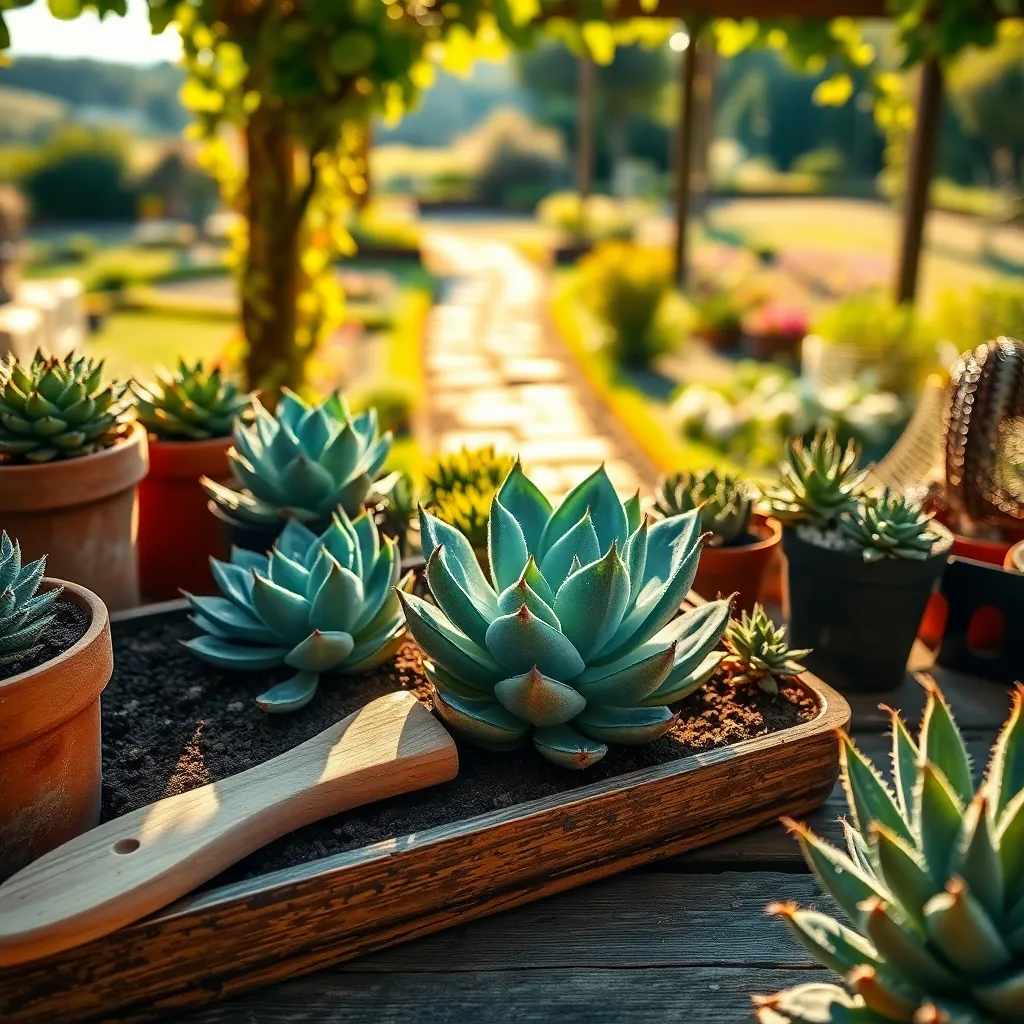
A soft brush is an essential tool for maintaining the health and appearance of your succulents. With its gentle bristles, it helps to remove dust and debris from the leaves without causing damage. Regular cleaning with a soft brush can prevent pests that thrive on dirt and grime.
Succulents can accumulate dust quite easily, especially if they’re indoors. By gently brushing the leaves, you not only improve their appearance but also enhance their ability to photosynthesize effectively. This simple task can be particularly beneficial during the growing season when your plants need maximum sunlight absorption.
For those with more experience, using a soft brush can also help you inspect your plants closely for any early signs of pests or disease. Spotting issues early allows you to take action quickly, ensuring your succulents remain healthy. Additionally, when watering, make sure to avoid the leaves to prevent water spots—another area where a soft brush can be handy post-watering to wick away any droplets.
When choosing a brush, opt for one with soft, natural bristles that won’t scratch the delicate surfaces of your succulents. A small brush, like a makeup brush or a paintbrush, can offer more precision, especially for tightly packed rosettes. This tool, when used regularly, can greatly enhance the overall care routine for your succulents, helping them thrive in any environment.
Sunlight Monitoring Tools
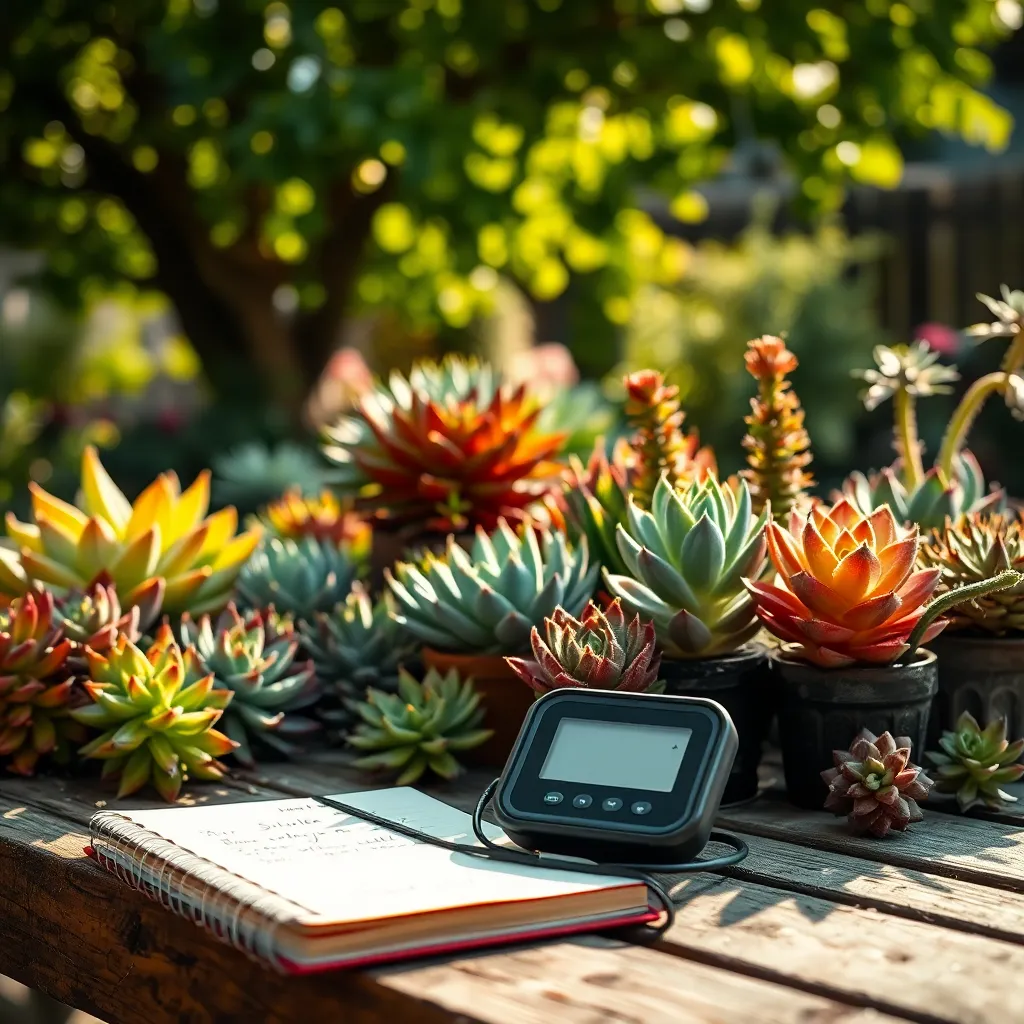
Tracking sunlight exposure is crucial for the health of your succulents, as they thrive in environments with plenty of light. A sunlight monitor can help you determine the exact amount of light your plants receive, ensuring they remain vibrant and healthy.
For beginners, start with a basic sunlight meter to gauge light levels throughout the day. Place the meter near your succulents to ensure they are getting the recommended six hours of bright, indirect sunlight daily.
Advanced gardeners might consider investing in a smart plant monitor. These devices not only measure sunlight but also track temperature, humidity, and soil moisture, offering a comprehensive view of your plant’s growing conditions.
To maximize your succulents’ health, monitor sunlight exposure regularly, especially if you move plants indoors or outdoors with the seasons. If sunlight is insufficient, consider using grow lights to supplement the natural light, which can be especially beneficial during shorter winter days.
Protective Gloves for Safety
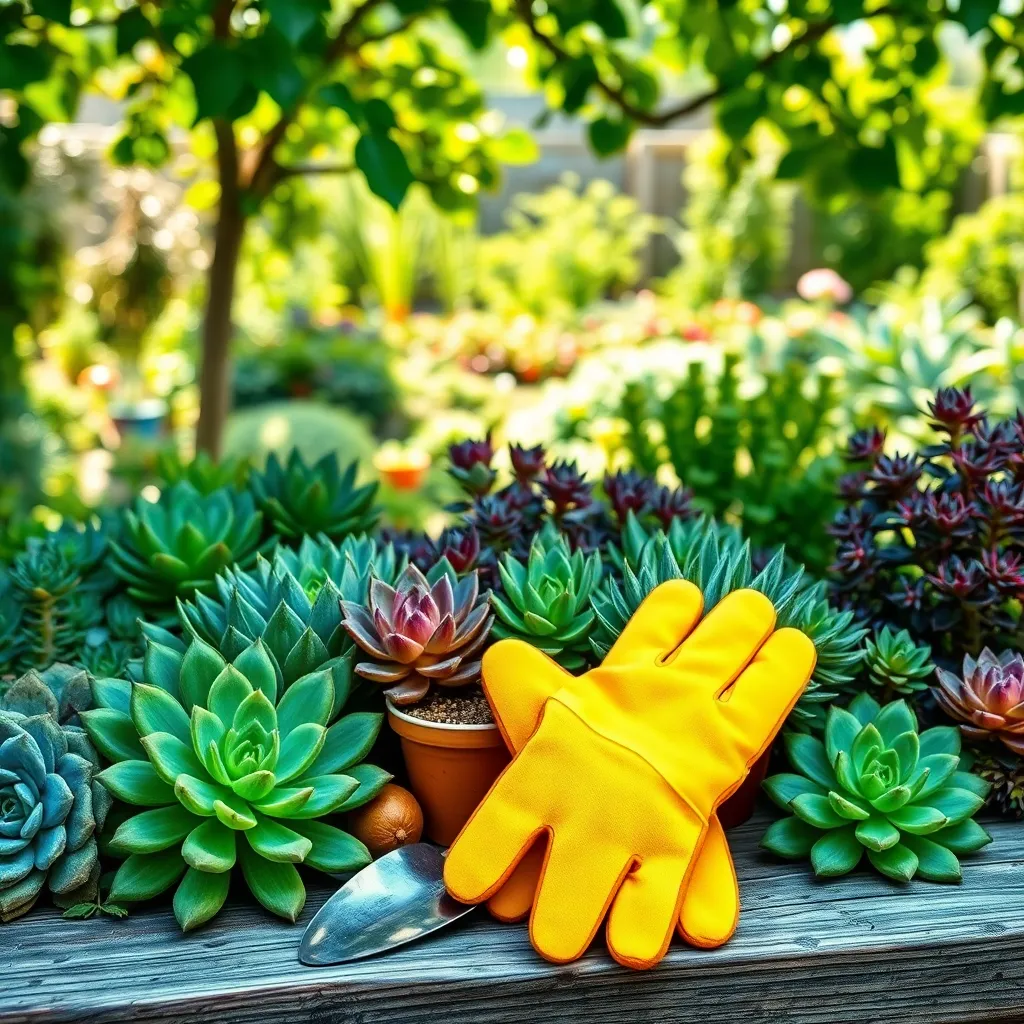
Protective gloves are essential for succulent care, offering both safety and comfort. Handling succulents can sometimes be prickly business, especially with varieties like cacti that have sharp spines.
Gloves help prevent injuries from these spines and protect your hands from soil-borne contaminants. Choose gloves that are both durable and flexible, allowing you to handle delicate plants without damaging them.
For beginners, a pair of lightweight, breathable gloves can be a game-changer when repotting or propagating succulents. Look for gloves with a snug fit to ensure you have the dexterity needed for precise work.
Experienced gardeners might prefer gloves with reinforced fingertips for added protection during more intensive tasks. Additionally, consider gloves with a water-resistant coating, as they can keep your hands dry when working with moist soil or during watering.
Conclusion: Growing Success with These Plants
In nurturing both succulents and relationships, the right tools can make all the difference. We’ve explored nine essential concepts that parallel the art of succulent care and thriving partnerships: communication, patience, attention to detail, adaptability, nurturing, boundaries, balance, trust, and shared growth. These elements are fundamental in cultivating a relationship that not only survives but flourishes.
As a next step, take a moment today to reflect on which of these tools you can apply to your current relationships. Perhaps start a conversation that you’ve been putting off or engage in an activity that strengthens your bond. Remember, just as succulents require regular care, so do the connections we hold dear.
We encourage you to bookmark this article now, ensuring that these valuable insights are always within reach. By doing so, you’re investing in the longevity and health of your relationships. As you continue on your journey, know that each small step you take in applying these tools brings you closer to a thriving, harmonious relationship. Here’s to a future where your connections are as resilient and vibrant as a well-tended succulent garden.

